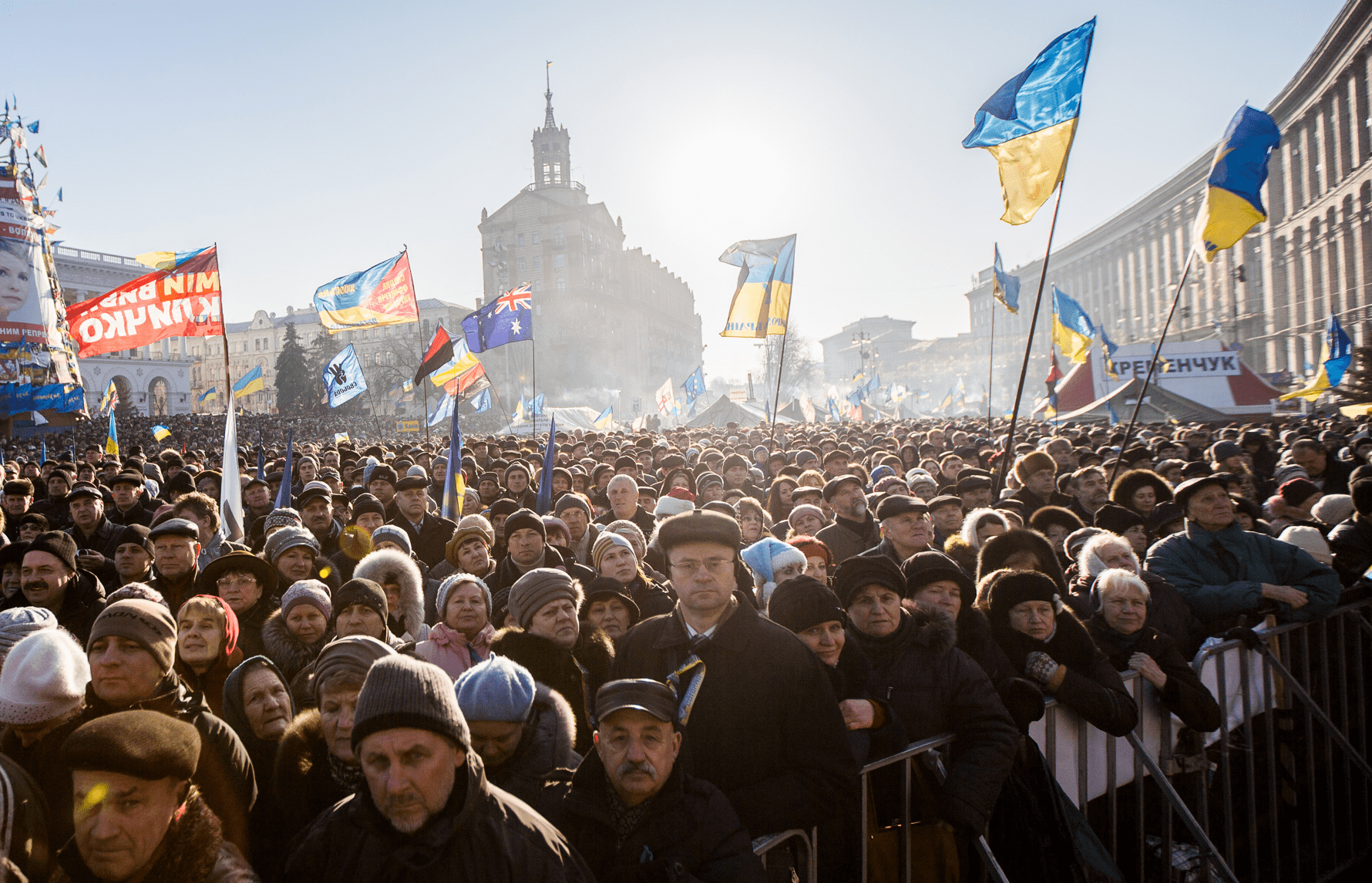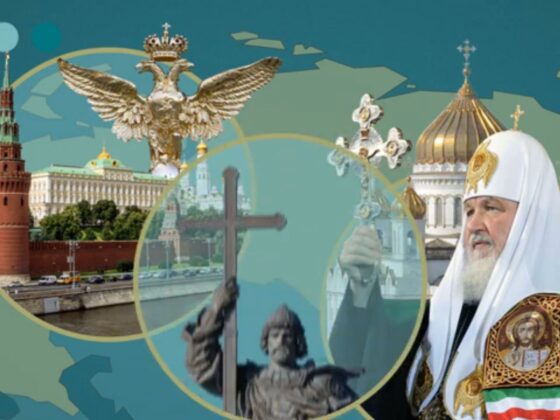(PONARS Eurasia Policy Memo) Revolutions have been plentiful in post-Soviet countries, but unlike classic revolutionary examples, they have been remarkably consistent in failing to establish a more stable political order and states autonomous from the influence of patronage. Post-revolutionary leaders and parties have either quickly lost power or had significant problems with re-election. Institutional and structural changes have remained limited. It has become typical in these countries to view these revolutions as just another cycle of elite circulation that “changed nothing.” How can we explain this pattern of frequent but ineffective revolutions?
We argue that post-Soviet revolutions have been responses to a severe crisis of political representation that their occurrence only reproduces and intensifies, explaining their frequency.[1] Post-Soviet revolutions are thus deficient revolutions in which large-scale mass protest combines with revolutionary aspirations, rhetoric, and repertoires of collective action with only vaguely articulated claims, loose structures of mobilization, and weak and dispersed leadership. They generate a symbolic resource of revolutionary legitimacy, for which various political agents may compete and which they can hijack; however, they do not establish stable institutions of political representation. We illustrate this argument with the case of Ukraine’s Euromaidan uprising—the most long-lasting, large-scale, violent but still deficient revolution in the post-Soviet region.
The Post-Soviet Crisis and Deficient Solutions
Revolutions have become commonplace in many post-Soviet countries. Three revolutions happened in Kyrgyzstan over the last 15 years. There were revolutions in Georgia in 2003 and Armenia in 2018. Protests led to a change of government in Moldova in 2009 and 2015. Although eventually unsuccessful in challenging the incumbents, similar mobilizations with revolutionary aspirations developed several times in Russia and Belarus. Three revolutions occurred in Ukraine during one generation: the “Revolution on Granite” in 1990, the “Orange Revolution” in 2004, and the Euromaidan or “Revolution of Dignity” in 2014.
The Euromaidan occurred in the context of the global wave of protests of the 2000s that included, among others, various “movements of public squares” in Western states like Occupy Wall Street, as well as the revolutions and massive protest mobilizations in the Global South such as the “Arab Spring.” In different local contexts, they are responses to closure of the political space by neoliberal-technocratic or authoritarian-patronal regimes, which suffer from similar underlying problems in the crisis of political representation.
The crisis of representation is the diminishing capacity of ruling elites to successfully claim representation of the interests of broader social groups and even less so of the whole nation. The crisis reveals itself in decreasing trust and participation in the institutions of representative democracy (such as elections), declining membership in political parties and civil society organizations, and growing detachment of popular masses from traditional political elites perceived as “all the same corrupt.” The consequences of the crisis of representation are voting for anti-establishment parties or leaders, growing participation in politics in ways that avoid the institutions of representation (such as protest mobilization) or escaping from politics into private life.
The macro-structural processes behind the ongoing crisis of political representation lie, among other things, in growing inequality, a diminishing role for traditional cleavages in politics, and an erosion of the cohesion of social groups since the wider neoliberal turn of the 1970s. In addition, the global economic crisis of 2008 was a crucial trigger for the ongoing global wave of protest. However, the post-Soviet crisis of representation was more severe from the very start for the following reasons.
First, post-Soviet elite formation happened in the process of an extraordinarily rapid and arbitrary privatization of state property combined with de-modernization. As a result, the birth of the new elite lacked any ideological, traditional, or religious sources of popular legitimacy across post-Soviet societies—and they are still widely being perceived as thieves and corrupt. Second, nation-building projects (if not supported by EU integration) were weak and usually did not fill voids formed by the collapse of the Soviet modernity project; sometimes experienced as a national identity split, such as the notorious East-West regional cleavage in Ukraine, they undermined the nation-wide representation “by default.” Third, post-Soviet elite political parties could not rely on any other party traditions than the Brezhnevist Communist Party of the Soviet Union. Therefore, they reproduced and exacerbated some of its worst features: paternalism, meaningless ideology, opportunism, and little activist mobilization. Fourthly, relations of political representation were also undermined from the “social” side of the connection by the weakness of corporate-interest organizations that were pushed into the informal sphere in the late Soviet period. They were eroded further over the course of ensuing social and economic disintegration.
The severity of the crisis of representation resulted in low trust of government and political parties, support for democracy, notoriously narrow civil societies, rejection of articulated ideologies, and relatively high electoral and protest mobilizations. The latter, however, had a “reactive” nature, primarily aimed against incumbents, and tended to struggle to formulate successful, positive alternatives.
In most post-Soviet states, patronal authoritarian rulers like Russian President Vladimir Putin or Belarusian President Aleksandr Lukashenka could provide a conservative solution to the crisis of representation. They combined an offer of stability amidst post-Soviet disintegration to electoral majorities while balancing some interests while repressing other elite groups. However, this solution has been deficient and simply conserved the crisis of representation—as revealed in persisting problems with controlled succession maneuvers that are often accompanied by opposition mobilization at the moment of an incumbent’s vulnerability. Post-Soviet revolutions present another deficient solution. Attempting to respond to the crisis of representation, they reproduce and intensify the very crisis.
Below we show how the Euromaidan responded to the key problems undermining political representation in post-Soviet Ukraine—a national identity split and weakness in both the social and political constituents of political representation relations. In the end, these problems were exacerbated due to the poor articulation of the social groups’ interests and loose structures of mobilization and leadership.[2]
How the Euromaidan Reproduced and Intensified the Crisis of Representation
Many claimed that the Euromaidan finally united Ukraine’s regions and ethnolinguistic groups in an inclusive civic nation project. However, as we demonstrated earlier, Euromaidan civic nationalism was of a specific, “eventful” kind. The eventful nature of Euromaidan nationalism made it, on the one hand, not only inclusive but exclusive and, on the other hand, made its effects volatile. Euromaidan nationalism excluded those who did not embrace the revolutionary event. This happened because Euromaidan activists claimed that the nation had already become united by the Euromaidan event itself, and as shown by the participation of people from Ukraine’s various regions in protests even though they did not necessarily represent majority opinions about support for the Euromaidan in southern and eastern regions.
This contributed to the alienation of those many Ukrainians who remained skeptical[3] about the Euromaidan and to the limited or temporary support for the nationalism-driven post-Euromaidan changes and parallel national polarizing trends. Instead of recognizing and articulating the legitimate political and cultural differences to be negotiated and transcended in a representative nation-building project, the Euromaidan demonstrated a kind of “reverse” process. It proclaimed national unity “by default,” which, over the course of events, lost its universality and began to reproduce and intensify the very divisions that undermined nation-wide political representation in post-Soviet Ukraine.
Many claimed that the Euromaidan gave a boost to Ukraine’s civil society. Indeed, it strengthened the (neo)liberal and nationalist organizations that usually speak on behalf of “Ukrainian civil society.” However, it did not significantly expand involvement in their activities. It did not contribute to stronger articulation and organization of corporate interests or social groups in the Ukrainian public space. At the same time, the Euromaidan inflated post-revolutionary expectations about social progress. Even though the “regular” Euromaidan protesters had aspired to social change, they did not succeed in articulating their specific interests because they believed that the “European choice” included “everything by default” (higher wages and pensions, better jobs and education, etc.) as something self-evident, in much the way that the Euromaidan allegedly united the nation by its very occurrence. Despite the diversity of participants from a variety of social groups, Euromaidan reproduced the narrow civil society.
The vast majority of protesters on Kyiv’s Maidan Nezalezhnosti (Independence Square) were neither members of nor mobilized by any political or civic organization. Even those organizations that were formed around social group identities, such as student or Soviet-Afghanistan war veterans, did not articulate the interests of their respective groups. Taken together, membership in civil society organizations hardly increased after the Euromaidan. The massive upsurge of post-Euromaidan volunteerism remained largely informal, driven by charismatic leaders, and did not go much further than supporting Ukrainian military efforts in Donbas and the typical nationalist agenda. What primarily changed, however, was the volume of resources (financial and violent) for the narrow civil society wedge to intensify its pressure on the Ukrainian state to advance (neo)liberal and nationalist agendas, which, for the most part, still do not represent the interests of the macro-social groups that constitute Ukrainian society. At the same time, the state became more vulnerable to pressure from civil society by becoming more dependent on foreign support, and also because its monopoly on legitimate violence was questioned during the course of the Euromaidan and war in Donbas.
Finally, the Euromaidan movement distrusted the leadership of political parties but, at the same time, amplified demands for political representation. The Euromaidan’s response to “dirty” oligarchic politics that alienated citizens was the “authentic” part of the politics of civic mobilization and solidarity, but this did not institutionalize into an autonomous political force. The formula of many regular protesters was the following: we are not engaging in “dirty” politics; however, in case the post-revolutionary government does not fulfill our expectations one more time, we will organize one more revolution against it.
The consequences were two-fold. The political benefits of the Euromaidan victory were ripped off by Petro Poroshenko and other oligarchic politicians and parties who competed for the resource of civic legitimacy that the Euromaidan generated. At the same time, the Euromaidan amplified a demand for political representation that could not be met by “politics as usual.” This is why post-revolutionary president Poroshenko lost re-election in 2019, even though he was cheerleading reforms that were aligned with Euromaidan nationalism. Poroshenko fell into a trap between inflated, poorly-articulated, poorly-organized mass expectations about post-revolutionary social progress and the well-articulated neoliberal and nationalist agendas of the empowered but-not-expanded civil society that was intensifying pressure on the weakened state. The radicalizing policies in the divisive “East-West” issues that crystallized in the electorally suicidal platform of “Army! Language! Faith!” were the easiest way to deliver “change” after the revolution in response to the civil society pressure. They also compensated for the lack of social progress that could undermine Poroshenko’s patronal network’s interests.
President Volodymyr Zelensky’s landslide electoral victory in 2019 was a perfect symptom of the intensifying crisis of political representation. He and the party he created from scratch succeeded not because of the attractiveness of their “new faces” and vague appeals (while avoiding clear answers) but because of the “extreme weakness” of the “old” politicians and parties. A Gallup poll showed record-low levels of distrust toward governmental institutions at the end of Poroshenko’s rule. The dynamics of a deficient revolution intensifying the crisis of representation brought those disappointed with the lack of revolutionary change after the Euromaidan together with those alienated with divisive nationalism as its result. Zelensky’s staggering 73 percent electoral support cut across Ukraine’s political cleavages much more than the Euromaidan.
However, lacking any real party, or a populist movement, or even a coherent team with a clear plan, Zelensky quickly fell into the same Poroshenko trap of being squeezed between the most powerful interests in Ukrainian politics (various patronal clans), Western powers, and the narrow civil society. Zelensky’s play with non-divisive national rhetoric remained incoherent, non-institutionalized, and non-materialized on any specific policies of inclusive nation-building. Instead, the president neither accelerated nor revised the nationalist policies of Poroshenko, and has been trying to compensate for the rising gap between inflated expectations and outcomes with selective prosecutions of oligarchs, opposition media, and political parties. The weak leader’s contradictory interests and maneuverings appear to be further intensifying the crisis of political representation rather than even just providing a conservative solution for it.
Conclusions
Recognizing the specificity of the Ukrainian case, we suggest that the mechanisms of reproduction and intensification of the crisis of political representation have general significance. We could speak about maidans as a generic term because it captures well the contradictions of contemporary, leaderless, loosely structured, ideologically unarticulated urban uprisings. They offer participants an eventful experience of “authentic” politics but at the same time are structurally predisposed to be hijacked by the forces that could benefit most from “revolutionary” legitimacy even if they cannot represent the interests of the revolution’s social bases. Nationalist radicalization would be a typical way to compensate for the gap between the expectations for a revolutionary breakthrough and reproduction of “politics as usual.” The military conflicts with neighbors (importantly, not only Russia) that followed the maidan revolutions in Ukraine, Georgia, Armenia, and Kyrgyzstan are hardly a coincidence.
What would be the most probable way out of the post-Soviet vicious circle of patronal authoritarian regimes and the deficiency of maidan revolutions? We hypothesize that it may come not from within—either from below or above—but rather from the outside during an escalation in geopolitical competition (“New Cold War”). Such developments may finally present a threat not just to individual “clans” but to post-Soviet elites as a class of political capitalists, an existential threat that the maidans have not yet been. Moreover, today’s growing risk of being outcompeted by elites from other, more economically competitive nations may incentivize this class to seek the politics of wider representation within a broader contest for the loyalty of the subaltern classes and nations in modernization “for all mankind.”
Volodymyr Ishchenko is Research Fellow at the Institute of Slavic Studies, Technical University of Dresden, Germany.
Oleg Zhuravlev is Researcher at the Public Sociology Laboratory, Russia.
[1] The argument is based on our forthcoming publication: Volodymyr Ishchenko and Oleg Zhuravlev, “Post-Soviet vicious circle: revolution as a reproduction of a crisis of hegemony,” in The Anthem Companion to Gramsci, ed. by Dylan J. Riley and Marco Santoro, Anthem Press (forthcoming).
[2] The analysis is primarily based on two large sets of in-depth interviews with diverse groups of Euromaidan participants (both protest “newbies” and activists of various organizations) that were collected in multiple Ukrainian cities in 2014 and 2016-17.
[3] Since 2014, support for the Euromaidan fluctuated at about 40 percent of Ukrainian citizens in the government-controlled territories. This has been a significant decline since February 2014 when 40 percent claimed support for the protesters in a sample that included highly skeptical Donbas and Crimea regions. In a survey commissioned by the Revolution of Dignity Museum in 2020, 22 percent claimed that they were supportive of Euromaidan in 2014 but not sure anymore that it was necessary.











